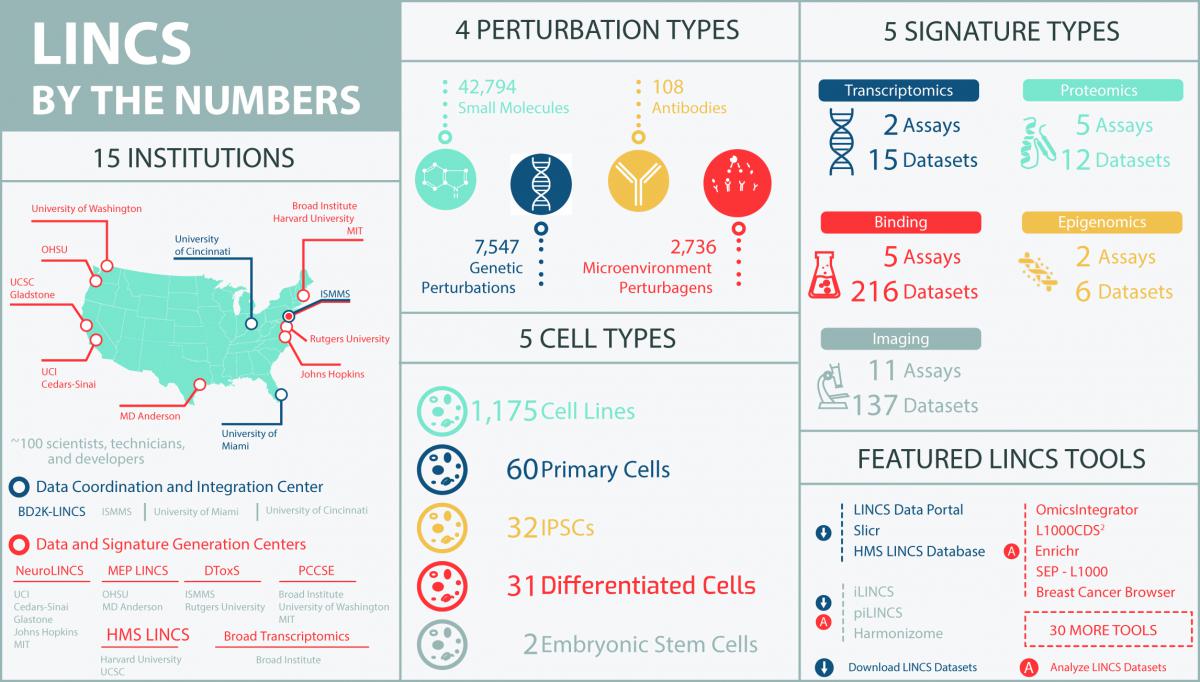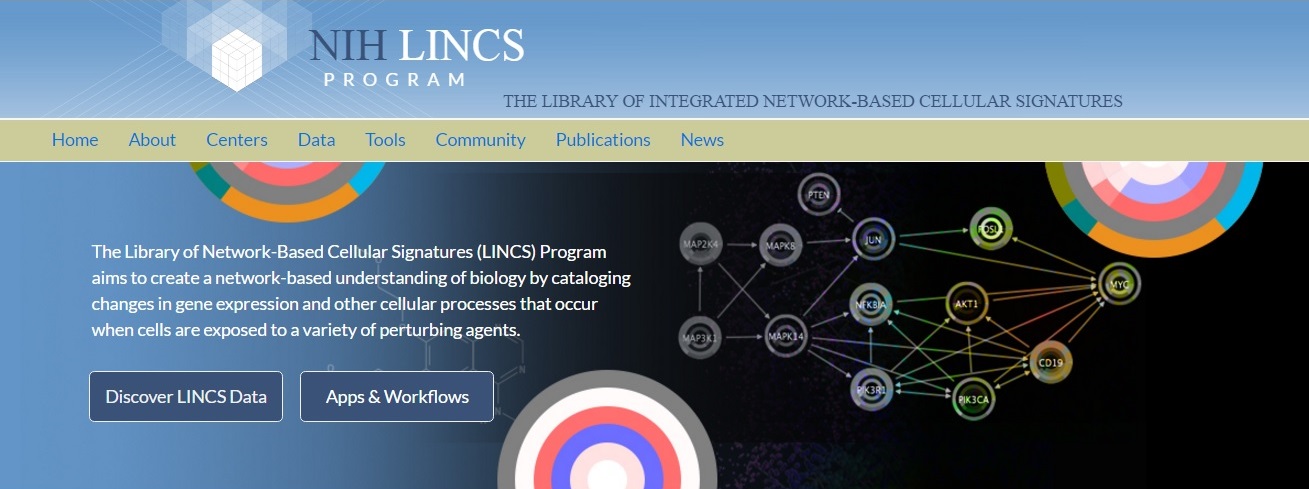Program Snapshot
The Common Fund’s Library of Integrated Network-based Cellular Signatures (LINCS) program developed a library that catalogs changes that occur when different types of cells are exposed to a variety of agents that disrupt normal cellular functions, called “perturbagens.” This library integrated data across cell types, perturbagens, and measurements of cellular responses for use by scientists to design and conduct experiments that can help us better understand normal and diseased cellular states and how to alter them.
The wealth of information created by the LINCS program is freely available to the research community and has led to important research discoveries, including new tools for enhancing drug discovery and predicting adverse health events. You can learn how researchers used LINCS data on our Highlights page.
The LINCS program has transitioned from Common Fund support. Common Fund programs are strategic investments that achieve a set of high-impact goals within a 5-10 year timeframe. At the conclusion of each program, deliverables will transition to other sources of support or use within the scientific community.
The LINCS program was supported by the Common Fund from 2011 to 2020. Currently, the wealth of information created by the LINCS program is freely available to the research community via lincsproject.org/lincs/.
Highlights of the LINCS program’s major accomplishments include the development of tools, cell lines, and datasets for small molecule, genetic, antibody, and microenvironment perturbagens that researchers can use to answer a wide array of biological questions. Learn more about the resources developed by the LINCS program in these publications:
- Connecting omics signatures and revealing biological mechanisms with iLINCS (Nature Communications, 2022 Aug 9; 13(1):4678
- Getting Started with LINCS Datasets and Tools (Current Protocols, 2022 July 25; (2)7:e487)
To help enable broad use of Common Fund data sets to accelerate discovery, LINCS is participating in the Common Fund Data Ecosystem (CFDE). You can search for files, biosamples, compounds, and more across LINCS and other Common Fund program data sets on the CFDE Portal.
Please note that since the LINCS program is no longer supported by the Common Fund, the program website is being maintained as an archive and will not be updated on a regular basis.
LINCS by the Numbers
This LINCS infographic provides an overview of the participating institutions and the types of perturbations, cells, and signatures analyzed during the course of the program:

Announcements
Signatures for Success: Reducing Side Effects of Cancer Drugs
Signature Improvement: Decoding Breast Cancer Drug Targets
LINCS in Action: Reducing Side Effects of Anti-Inflammatory Drugs Used to Treat Skin Conditions
LINCS In Action: Discovering a New Treatment Approach for Alzheimer’s Disease
Access the LINCS Portal
The LINCS portal is a source of information for the research community and general public about the LINCS project.
Read More About LINCS
-
The Library of Integrated Network-Based Cellular Signatures NIH Program: System-Level Cataloging of Human Cells Response to Perturbations. An overview of LINCS technologies, datasets, and tools.
-
Data Portal for the Library of Integrated Network-based Cellular Signatures (LINCS) program: integrated access to diverse large-scale cellular perturbation response data. A description of how the LINCS Data Portal makes LINCS data available to the research community.
Big Data Science with the BD2K-LINCS Data Coordination and Integration Center
The BD2K-LINCS Data Coordination and Integration Center is hosting a Big Data Science Massive Open Online Course on Coursera. Visit the Coursera website to learn more about this course.




